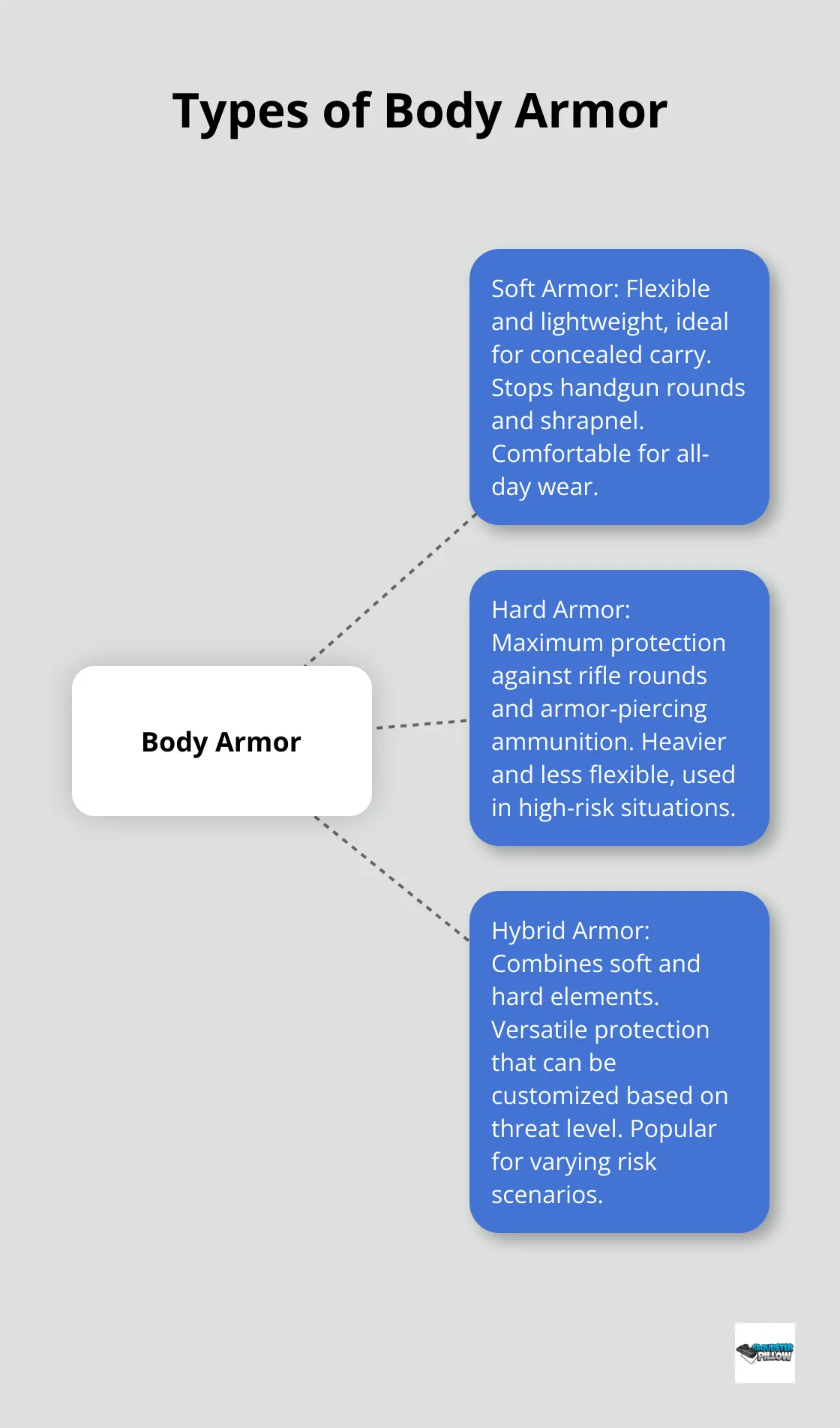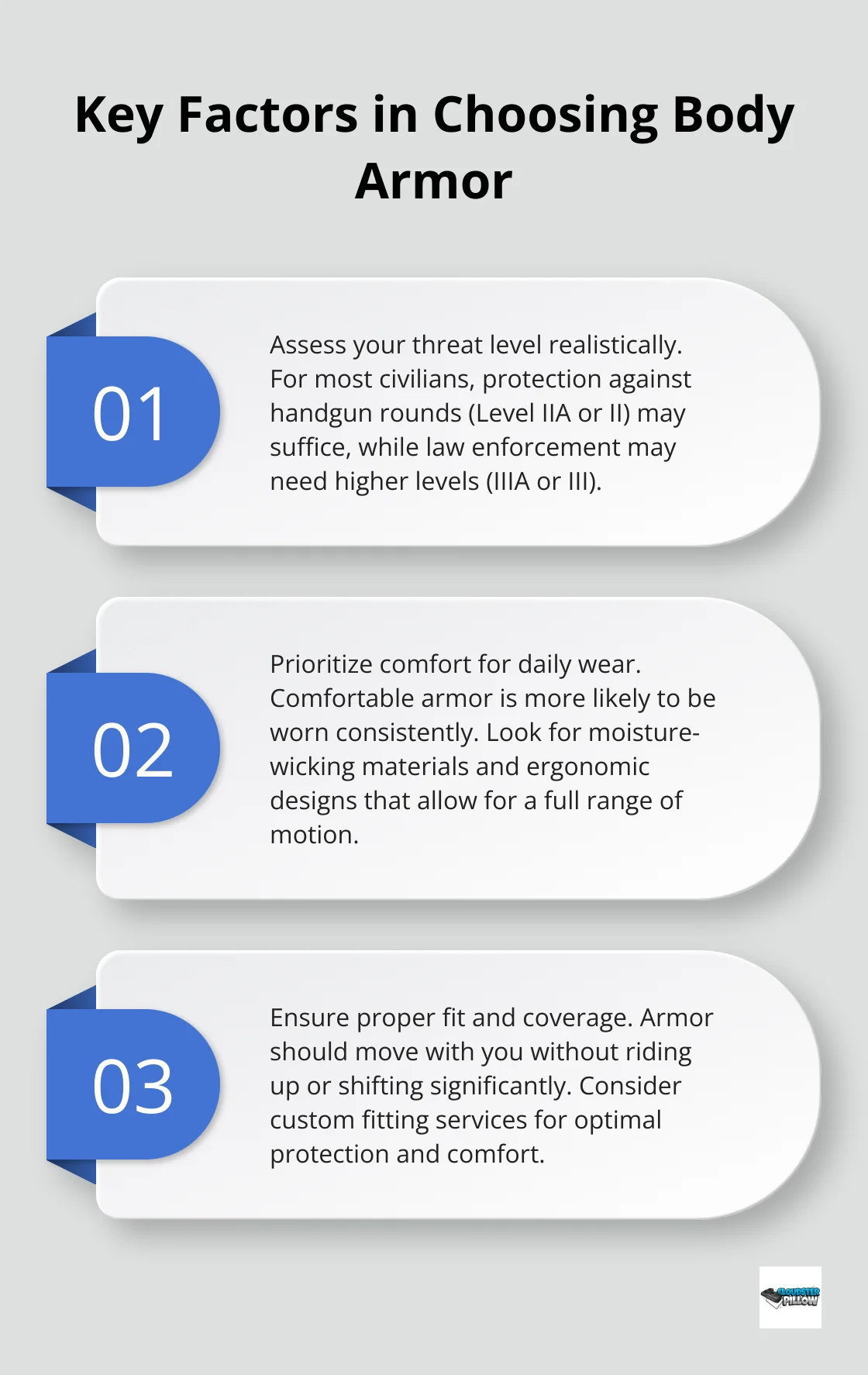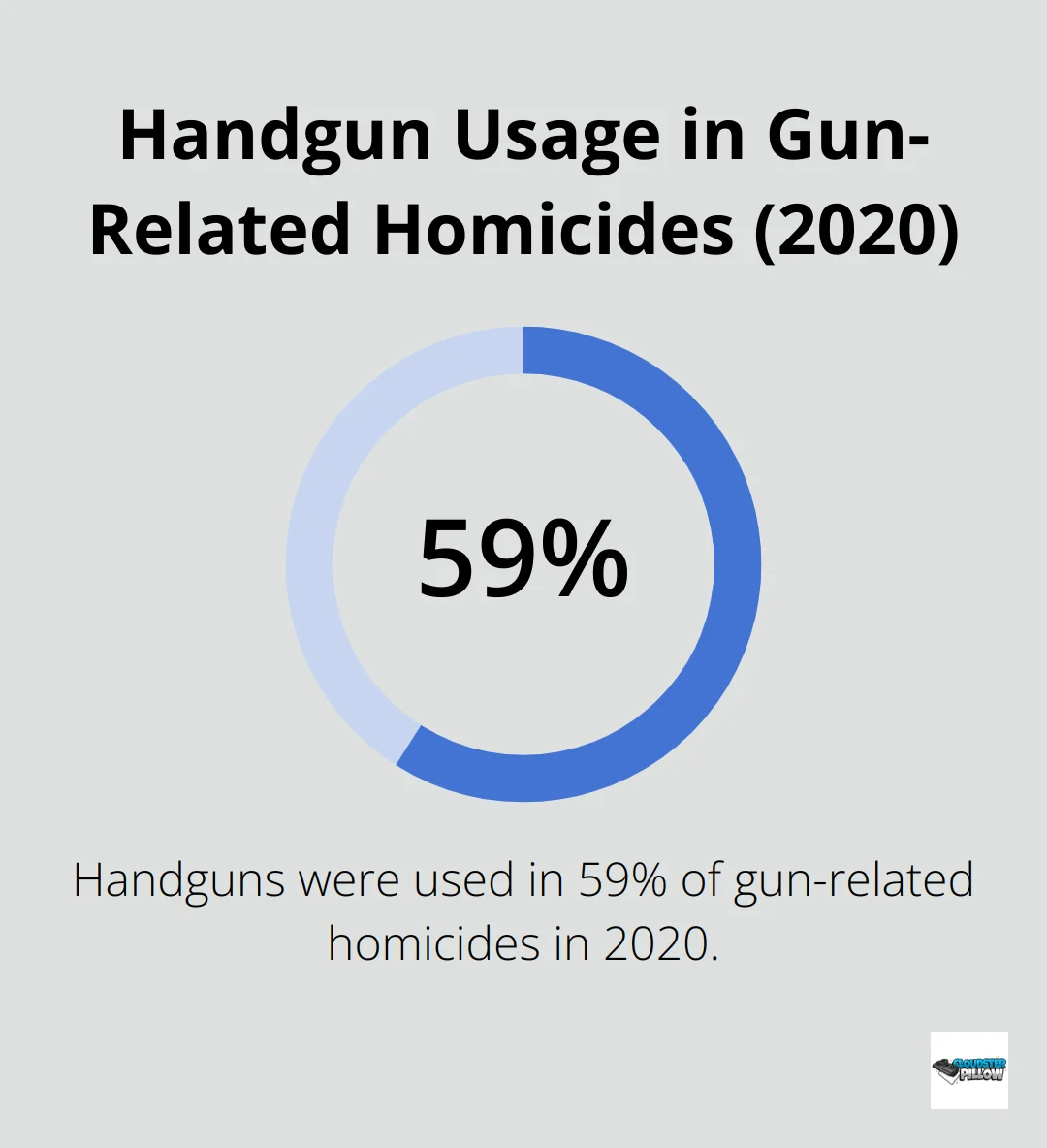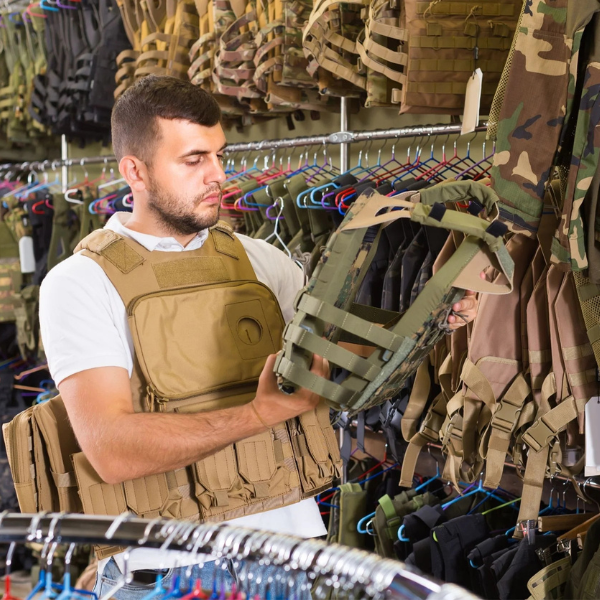Body Armor
A Beginner’s Guide to Understanding Body Armor
At Cloudster Pillow, we understand the importance of personal safety. Body armor is a critical tool for protection, but it can be overwhelming for beginners to navigate the various types and features.
This guide will break down the essentials of body armor, from different types to protection levels, helping you make an informed decision for your safety needs.
What Are the Main Types of Body Armor?
Body armor comes in several forms, each designed for specific needs and threat levels. This chapter will explore the key types to help you understand which might suit your situation best.

Soft Body Armor: Flexibility Meets Protection
Soft body armor is the top choice for many law enforcement officers and civilians who seek daily protection. It consists of multiple layers of woven or laminated fibers that catch and deform bullets, absorbing their energy. This type excels in stopping handgun rounds and shrapnel.
The main advantage of soft armor is its flexibility and light weight, which makes it ideal for concealed carry. It offers comfort for all-day wear, which is essential for those who need constant protection without sacrificing mobility.
However, soft armor has its limits. You’re only protected from handguns and likely shotguns. A level IIIA panel provides the most protection possible while being concealable.
Hard Body Armor: Maximum Protection at a Cost
When you face more severe threats, hard body armor is the answer. It typically consists of rigid materials like ceramics or polyethylene. These plates can stop rifle rounds and even armor-piercing ammunition.
The trade-off for this level of protection is weight and bulk. Hard armor weighs significantly more than soft armor and offers less flexibility, which can impact mobility and comfort during extended wear.
Law enforcement SWAT teams and military personnel often use hard armor in high-risk situations. For civilians, it’s less practical for daily use but might be a consideration for specific high-threat scenarios.
Hybrid Body Armor: The Best of Both Worlds
Hybrid armor combines elements of both soft and hard armor. It usually consists of a soft armor vest with pockets to insert hard armor plates. This setup allows users to customize their protection level based on the perceived threat.
The advantage of hybrid systems is their versatility. You can wear the soft component for day-to-day protection and add hard plates when you face higher risks. This flexibility makes hybrid armor popular among those who encounter varying threat levels.
Hybrid armor systems that combine multiple materials could further improve the balance between weight and protection. Meanwhile, custom-fitted options are being developed to enhance comfort and concealment.
Concealable vs. External Armor
Body armor also falls into two categories based on how it’s worn: concealable and external.
Concealable armor (often soft armor) is designed to be worn under clothing. It’s thinner and more discreet, making it ideal for everyday carry or undercover operations. However, it typically offers less protection than external armor.
External armor (often hard or hybrid) is worn over clothing. It provides more coverage and can offer higher levels of protection, but it’s also more visible and can be less comfortable for extended wear.
The choice between concealable and external armor often depends on your specific needs, the level of threat you face, and the requirements of your job or situation.
As we move forward, let’s examine the different protection levels these armor types offer and how they’re rated. This information will help you make an informed decision when selecting the right body armor for your needs.
How Are Body Armor Protection Levels Rated?
Understanding body armor protection levels is essential for selecting the right gear for your needs. The National Institute of Justice (NIJ) sets the standard for body armor ratings in the United States, providing a clear framework for evaluating protection capabilities.
NIJ Protection Levels Explained
The NIJ classifies body armor by levels of ballistic performance. Each level corresponds to the armor’s ability to stop specific types of ammunition.
Level IIA is the lightest, designed to stop 9mm and .40 S&W rounds. It’s often used in concealable vests for low-risk situations. Level II offers slightly more protection, capable of stopping faster 9mm and .357 Magnum rounds. Both these levels are common choices for everyday carry (EDC) situations.
Level IIIA is the highest level of soft armor protection. It can stop most handgun rounds, including .44 Magnum. This level is popular among law enforcement officers who need substantial protection without the bulk of hard armor.
Level III hard armor plates can stop rifle rounds like the 7.62mm NATO. Level IV, the highest protection level, can even stop armor-piercing rifle rounds. These levels are typically used in high-risk scenarios by military personnel and SWAT teams.
Special Threat Protection
While NIJ ratings provide a solid baseline, some manufacturers offer “special threat” ratings. These address specific ammunition types not covered by standard NIJ tests. For instance, some armor might be rated to stop 5.56mm NATO rounds, which fall between Level IIIA and III protection.
Special threat ratings can be particularly relevant for law enforcement or security professionals who face unique risks. However, it’s important to note that these ratings aren’t standardized like NIJ levels, so careful research is necessary when considering such options.
Real-World Ballistic Performance
Understanding ballistic performance goes beyond just stopping power. Factors like blunt force trauma, multi-hit capability, and edge shot performance all play important roles in real-world protection.
Blunt force trauma refers to the impact energy transferred to the body even when a bullet doesn’t penetrate. Quality armor should distribute this force to minimize injury risk. Multi-hit capability is the armor’s ability to stop multiple rounds in the same area, a critical factor in real-world scenarios.
Edge shots (bullets striking near the edge of an armor plate) can be particularly challenging. Some manufacturers specifically test and rate their products for edge shot performance, providing an extra layer of assurance.
As we move forward, it’s important to consider how these protection levels and performance factors apply to your specific needs. The next chapter will guide you through the process of choosing the right body armor based on your individual requirements and circumstances.
How Do I Choose the Right Body Armor?
Selecting the right body armor impacts your safety and comfort. We at Cloudster Pillow understand the importance of making an informed choice. Let’s explore the key factors to consider when choosing body armor that meets your specific needs.

Assess Your Threat Level
The first step in choosing body armor is to realistically assess the threats you’ll likely face. For most civilians, the primary concern is protection against handgun rounds. In this case, a Level IIA or II soft armor vest might suffice. However, if you’re in law enforcement or face higher risks, you might need Level IIIA soft armor or even Level III hard plates.
The FBI’s Uniform Crime Report states that handguns were used in 59% of gun-related homicides in 2020. This statistic underscores the importance of having protection against common handgun calibers for everyday scenarios.

Prioritize Comfort for Daily Wear
Comfort is essential, especially if you plan to wear your armor regularly. An uncomfortable vest is one you’re less likely to wear consistently, defeating its purpose. Look for armor with moisture-wicking materials and ergonomic designs. Some manufacturers offer ventilated options that can significantly improve airflow and reduce heat buildup.
The National Institute of Justice (NIJ) found that officers who find their armor comfortable are 3.8 times more likely to wear it regularly. This highlights the direct link between comfort and consistent use.
Ensure Proper Fit and Coverage
A properly fitted vest is vital for both protection and comfort. Armor that’s too large can leave gaps in coverage, while armor that’s too small can restrict movement and breathing. Many reputable manufacturers offer sizing guides and even custom fitting services.
When you try on armor, perform a range of motions you’d typically do in your daily activities (this includes sitting, bending, and reaching). The armor should move with you without riding up or shifting significantly.
Consider Concealability
If you need to wear your armor discreetly, concealability becomes a key factor. Look for low-profile designs and consider the clothing you typically wear. Some armor is specifically designed to be worn under regular clothing without printing or bulging.
For those carrying concealed, integrating your body armor with your everyday carry setup is important. The Cloudster Pillow can help enhance comfort and concealability when wearing body armor with your AIWB or IWB holster.
Maintenance Matters
Proper care extends the life and effectiveness of your body armor. Most soft armor can be wiped down with a damp cloth, but avoid submerging it in water. Hard plates typically require less maintenance but should be inspected regularly for cracks or deformities.
Store your armor flat or on a hanger in a cool, dry place away from direct sunlight. UV exposure can degrade the protective fibers over time. Also, be aware of your armor’s expiration date. The NIJ recommends replacing soft body armor every 5 years, even if it hasn’t been damaged or worn frequently.
It’s important to note that legal restrictions on the purchase and use of body armor can vary significantly by region. In some places, civilians can buy body armor freely, while other areas may have more stringent regulations. Always check your local laws before purchasing body armor.
Final Thoughts
Body armor selection impacts your safety and comfort. You must consider threat level, fit, and concealability to choose the right protection. Training with your gear ensures familiarity with its capabilities and limitations, allowing effective movement while wearing it.
Integrating body armor with everyday carry can present challenges. The Cloudster Pillow enhances comfort and concealment for those using inside-the-waistband or appendix holsters. It complements body armor by reducing pressure points and improving wearability.
The best body armor fits seamlessly into your daily routine. You should stay informed about the latest developments in body armor technology. Always adhere to local laws and regulations regarding its purchase and use (this varies by region).

